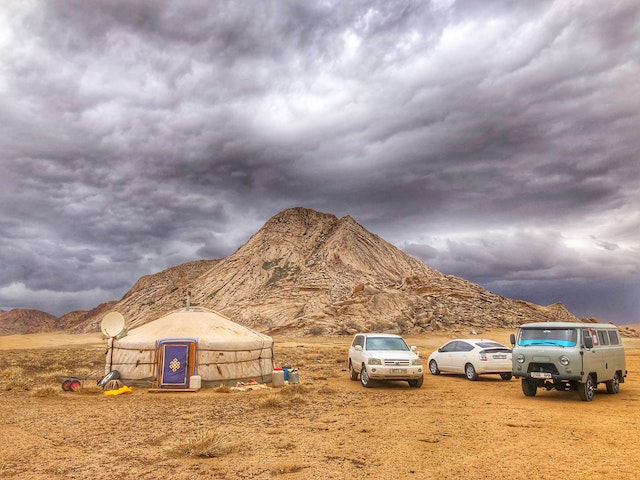
Are Inner and Outer Mongolia separate countries? Outer Mongolia is the country of Mongolia and Inner Mongolia is a part of China.
Outer Mongolia is known as Mongolia and has an official language of Mongolian, although many people also speak Russian. It has a population of a little over 3 million people and the capital city is Ulaanbaatar. Some people still write in traditional vertical Mongolian script, but most writing is done in the Russian Cyrillic alphabet. Inner Mongolia is known as the Inner Mongolia Autonomous Region and the official languages are Mongolian and Mandarin. It has a population of 5 million people and the capital city is Hoh hot. People still write using traditional Mongolian vertical script, but many people also write in Chinese.
To find out why this is, we have to go back to look at the Mongolian Empire and what happened to it. Before Genghis Khan, the Mongolian plateau was controlled by 5 different tribes. The Chinese tried to keep the tribes focused on each other so they wouldn’t attack China. China and the Mongols had had an easy relationship, which was why the Great Wall of China was built. From 1203, Genghis Khan united all of the tribes and then, from about 1210, he turned his attention to China and the Jin Dynasty. Genghis Khan died in 1227 and his successors pushed the Mongol Empire on until it crossed all of Asia and reached into eastern Europe by the 1240s. Under Kublai Khan, the Mongols conquered all of China and founded the Yuan Dynasty. Everything looked good, but one of the problems with the Mongol Empire was that each successive khan had a huge family, which left many children competing to rule. Civil War and a breakup of the empire was probably inevitable. By the end of the 13th century, the Mongol Empire had fractured into eastern and western halves. Each half was ruled by a khan, but there were many regional leaders as well.
Infighting in the empire increased and it slowly broke into different pieces. The Ming dynasty rose up in China and slowly overthrew the Yuan dynasty, pushing all of the Mongols back to their homeland on the Mongolian plateau. The Mongols concentrated on this area and the capital of Hoh hot was founded in 1557. At this time, a new dynasty, the Qing dynasty, was rising in China and they were a force to be reckoned with. Within 10 years, they had completely taken over inner Mongolia. Outer Mongolia lasted slightly longer before it fell and the names of inner and outer come from being trusted by the Chinese (inner) and not being trusted (outer). Outer Mongolia was allowed some autonomy, but travel between inner and outer was banned so that there was no chance of reunification.
In 1911, the Qing dynasty fell in the revolution. The new government of the Republic of China claimed all of the Mongolian territory and sent in its troops. Russia promised to protect Outer Mongolia, but they never sent any troops and the Chinese took the whole area fairly easily. After the Russian revolution had settled down, Russia started to expand its borders again and by 1921 the Russians pushed the Chinese out of Outer Mongolia. Mongolia declared independence, but had a heavily Soviet supported communist government.
During the Second World War, the Japanese tried to take Mongolia, but Russia managed to keep them at bay. Then, after the war, at the Yalta Conference, the Soviet Union managed to get the other participants to agree to the independence of outer Mongolia. The Chinese weren’t too happy, because they saw outer Mongolia as part of their territory. With the backing of the Soviet government, there wasn’t much China could do and Mongolia became an “independent” country. However, it was only with the fall of the Soviet Union in 1991 that outer Mongolia really became independent.
Throughout this period, China kept hold of inner Mongolia and started a program of mass migration of Han Chinese people to ensure that the territory didn’t try to break away. Inner Mongolia is a source of many resources for China because it has many rare earth metals and 15% of the world’s coal reserves. A lot of people in Mongolia would like to see the two parts of the country reunite, but it seems unlikely. The cultures are too far apart now and China has too strong a grip on inner Mongolia. And this is what I learned today.
Photo by sungmu heo: https://www.pexels.com/photo/three-vehicles-beside-mountain-under-cloudy-sky-2689623/
Sources
https://koryogroup.com/blog/a-tale-of-two-mongolia-s-inner-mongolia-and-outer-mongolia
https://en.wikipedia.org/wiki/Mongolia
https://en.wikipedia.org/wiki/Mongol_Empire
